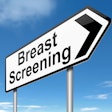Breast imaging software developer Volpara Solutions announced two new additions to its line of automated breast density assessment and enterprise analytics software, along with new research, at RSNA 2015.
The new software will help radiologists address the requirement in the BI-RADS 5th Edition Atlas to provide "an overall assessment of the volume of attenuating tissues in the breast, to help indicate the relative possibility that a lesion could be obscured." The Volpara Density Map, pending U.S. Food and Drug Administration clearance, presents 3D quantitative volumetric information created by the VolparaDensity algorithm in a 2D image that is available as an additional DICOM secondary capture image, the firm said.
For cases in which additional information is needed beyond the VolparaDensity Scorecard, the Volpara Density Map provides a reliable and reproducible means of visually assessing which regions of dense tissue present a masking risk by showing density in a standardized way together with quantitative metrics that provide information on the dense tissue. The Volpara Density Map also optimizes the visual comparison of fibroglandular tissue change over time.
The other addition, VolparaEnterprise, is a work-in-progress that provides real-time quality assurance and performance monitoring through interactive dashboards. It's designed to help facilitate the evaluation of mammography and tomosynthesis system utilization, examination times, patient dose, patient positioning, and patient comfort.
The software can help sites perform rapid quality control to spot issues for early intervention, optimize deployment of imaging resources based on density population demands, increase effectiveness of technologist staff, and provide evidence to demonstrate compliance and quality of care. It may also be accessed from any browser or mobile device. It includes new positioning metrics, including detection of nipple in profile, inframammary fold, and pectoral angle analysis.
At RSNA, Volpara will also showcase updates available with VolparaDensity v3.1, its density assessment tool available clinically for use with digital breast tomosynthesis datasets from Hologic, GE Healthcare, and Siemens tomosynthesis systems. Updates include configurable patient scorecards, a high-capacity server, and the ability to route patient results by Volpara's Volpara Density Grades, which are correlated to the BI-RADS density categories.
In other RSNA news, Volpara is touting nine studies that highlight the use of the firm's quantitative breast imaging software tools to help improve screening of women with dense breasts, including the following:
"Quantifying the Potential Masking Risk of Breast Density in Mammographic Screening" compared the current method of reporting on reduced mammographic sensitivity, using the American College of Radiology (ACR) BI-RADS density categories, with quantitatively assessed volumetric breast density. Results showed VolparaDensity breast density assessment captures the potential masking risk of breast density more precisely compared with the BI-RADS density categories. Volumetric breast density can be used to more accurately determine the effect of density on masking compared with BI-RADS density categories, the researchers concluded.
"Optimisation of the Selection of Women with an Increased Risk of a Masked Tumor for Supplementary Screening" examined methods to identify women with density patterns associated with a high masking risk. Researchers used Volpara Density Maps to look at optimal ways of selecting women for supplementary screening. Results suggest the most effective measure was related to dense breast tissue over 1-cm thick.



















